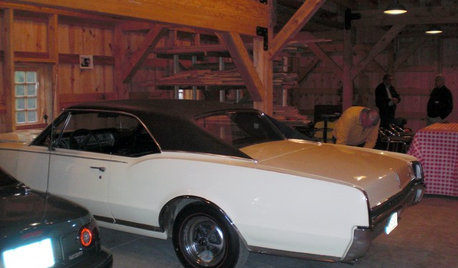tell me what you know about interstem apples.
windfall_rob
10 years ago
Related Stories

FUN HOUZZHouzz Call: Tell Us About Your Dream House
Let your home fantasy loose — the sky's the limit, and we want to hear all about it
Full Story
FEEL-GOOD HOMEGuys Tell Us About Their Favorite Places at Home
For Father’s Day, Houzz men show us the places in their homes where they like to hang out
Full Story
FUN HOUZZEverything I Need to Know About Decorating I Learned from Downton Abbey
Mind your manors with these 10 decorating tips from the PBS series, returning on January 5
Full Story
FURNITUREHow to Buy a Quality Sofa That Will Last
Learn about foam versus feathers, seat depth, springs, fabric and more for a couch that will work for years to come
Full Story
LIFETell Us: Do You Know How to Live With Your Parents?
If you've tried multigenerational living under one roof, we'd love to hear the details
Full Story
KITCHEN DESIGNHouzz Call: Tell Us About Your First Kitchen
Great or godforsaken? Ragtag or refined? We want to hear about your younger self’s cooking space
Full Story
COLORHave You Heard the Hues? 15 Colors You May Not Know About
Name-drop these shades at holiday parties — or better, try one on your walls — and expand your palette possibilities
Full Story
REMODELING GUIDESWhat to Know About Budgeting for Your Home Remodel
Plan early and be realistic to pull off a home construction project smoothly
Full Story
WORKING WITH PROSWhat Do Landscape Architects Do?
There are many misconceptions about what landscape architects do. Learn what they bring to a project
Full Story
MATERIALSInsulation Basics: What to Know About Spray Foam
Learn what exactly spray foam is, the pros and cons of using it and why you shouldn’t mess around with installation
Full StoryMore Discussions








alan haigh
bruce2288
Related Professionals
Arlington Landscape Architects & Landscape Designers · Camas Landscape Architects & Landscape Designers · Fitchburg Landscape Architects & Landscape Designers · Folsom Landscape Architects & Landscape Designers · Hershey Landscape Architects & Landscape Designers · Anderson Landscape Contractors · Canton Landscape Contractors · Aberdeen Landscape Contractors · Boca Raton Landscape Contractors · Fort Wayne Landscape Contractors · Pleasanton Landscape Contractors · Shoreview Landscape Contractors · Tustin Landscape Contractors · Wallingford Landscape Contractors · 07920 Landscape Contractorsalan haigh
fruitnut Z7 4500ft SW TX
alan haigh
windfall_robOriginal Author
alan haigh
rayrose
alan haigh
rayrose
alan haigh
rayrose
alan haigh
bob_z6
rayrose
bob_z6
rayrose
bob_z6
alan haigh